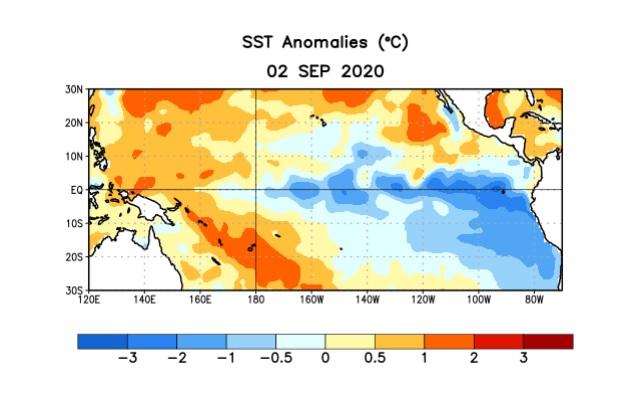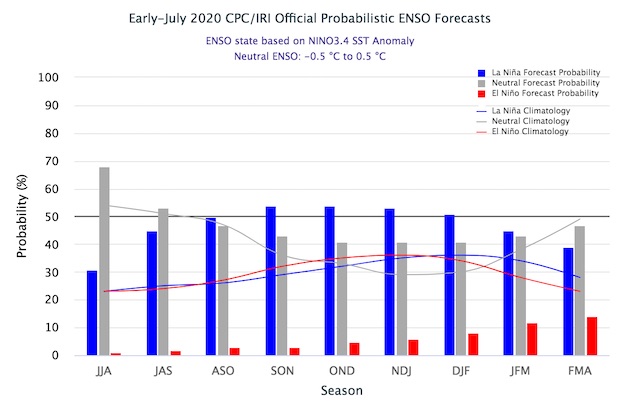El Nino and La Nina
-

With a La Nina advisory in effect, that means we can expect to see several months of La Nina conditions across the Southeast, although the strength of the signal will depend on how strong and how long the La Nina is. Here is a good general discussion on the likely climate effects from Kirk Mellish…
-

As expected, NOAA’s Climate Prediction Center has issued a La Nina Advisory this week to note that a La Nina has officially been observed to occur. You can find their text advisory at https://www.cpc.ncep.noaa.gov/products/analysis_monitoring/enso_advisory/ensodisc.pdf. There is a 75 percent chance that it will continue through Northern Hemisphere winter. In the Southeast, a La Nina is…
-

The latest forecast for La Nina by Columbia University’s IRI group shows that this month neutral conditions just barely edge out La Nina conditions 51 to 49 percent, but for the months after that, La Nina conditions are expected to dominate the probabilities until spring. A La Nina winter usually means warmer and drier conditions…
-

If you’ve been following conditions in the Eastern Pacific Ocean lately, you know that the temperatures there have been showing the characteristic pattern of colder than normal temperatures along the equator. This is the signature sign of a La Nina. While a La Nina is not officially called until the conditions have lasted for 4…
-

In today’s webinar (recording at https://www.youtube.com/watch?v=lWnEtfS6gVk&feature=youtu.be) on climate conditions in the ACF river basin in Georgia, Alabama, and Florida, David Zierden, the Florida State Climatologist, discussed some recent changes in the temperature profile of the Eastern Pacific Ocean. Over the last month, the ocean temperature distribution has started to look much more like a La…
-

The El Nino-Southern Oscillation, or ENSO, is the single most important predictor of seasonal climate in the Southeast, so we tend to watch it fairly closely to see if it can give us clues to future conditions. But researchers have found that a shift in ENSO patterns has reduced our ability to make useful predictions.…
-

The latest ENSO outlook was released today by NOAA. The outlook says that there is a 55 percent chance that neutral ENSO conditions will last through summer. By late fall there is an almost even chance of neutral or La Nina conditions occurring, with a much smaller chance of an El Nino. You can read…